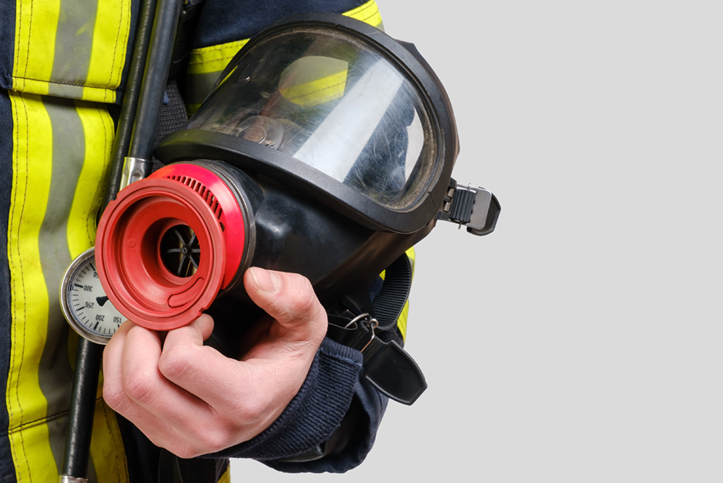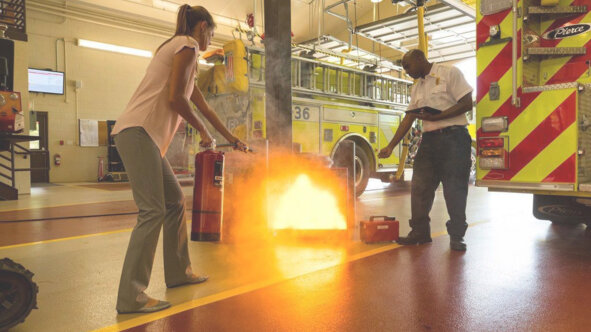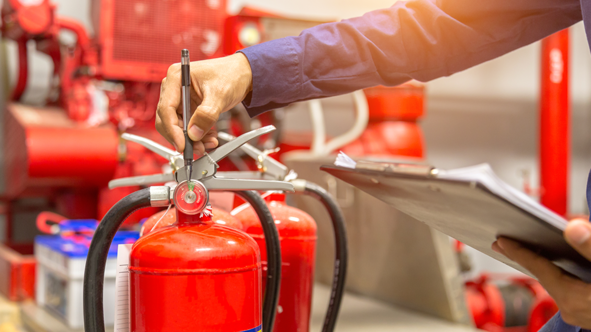Why?
Your own safety comes before all else during a fire. So it is best to work with proper respiratory protection equipment. For example, autonomous and non-autonomous respiratory protection equipment (IS-081), such as a breathing apparatus and an apparatus with a hose connection. This practical training will teach you how to use respiratory protection equipment effectively and safely.
What do you learn?
During this training, you learn how to react in specific situations. It contains a theoretical and a practical part. There is a maximum of 12 participants. In this way, you gain as much practical experience as possible.
Theory
- Correctly interpreting the regulations for the use of self-contained respiratory protection equipment
- Respiratory function
- Recognising risks (oxygen deficiency, substances harmful to your health, and limit values)
- Supplied-air and self-contained respiratory protection equipment (scope, functioning, and limitations)
- Construction and operation of self-contained respiratory protection equipment
- Calculating factors influencing the degree of protection: pressure and residual pressure, air consumption, and safety margin
- Explaining points for attention when using a hose connection (canister dolly, respiratory air network)
- Advantages and disadvantages of autonomous respiratory protection equipment and air via a fixed respiratory airline
- Maintenance and checks
- Start-up and shut-down procedure and safety tests
- Last-Minute Risk Assessment (LMRA)
Practical
- Preparing and checking the respiratory protection equipment
- Start-up and shut-down procedure
- Getting used to wearing autonomous respiratory protection equipment
- Climbing stairs, ladders, crawling through narrow passages and low passages, and going through a manhole while wearing respiratory protection equipment
- Performing simple work while wearing respiratory protection equipment
- Responding to an emergency: problems with your own canister, colleague in need, fire or gas alarm
- Calculating air consumption and return time
This course is part of our Increase-offer

Increase your knowledge or get a refresher on a particular subject. In this way you strengthen your practical skills. The courses can be either digital or classroom-based.
Result
After this training, you will be able to work effectively and safely with autonomous and non-autonomous respiratory protection equipment (IS-081).
You will receive a certificate of participation.
On request, you will also receive a BeSaCC VCA-accredited diploma IS0-81 ‘Working with self-contained (autonomous and non-autonomous) respiratory protection equipment’. This diploma remains valid for five years.
General knowledge of fire safety
Prefer to learn the basics about fire safety first? Then be sure to follow the 'Fire prevention and control' training course.
For whom?
Respiratory protection equipment is part of the equipment for members of the first intervention team, evacuation team, and firefighting service. The training is therefore aimed at that group of emergency responders.
Admission requirements
You are at least 18 years old and have been declared medically fit to wear self-contained respiratory protection equipment.
What does the law say?
- If you work in polluted air or in places with little oxygen, you must use respiratory protection equipment.
- Personal protective equipment (PPE) for respiratory protection filters ambient air (= dependent on the ambient air) or supplies clean air (= independent of the ambient air).
- It is best to leave the selection of the right respiratory protection equipment to a specialist.
- Users of such PPE must first receive the necessary training to prevent serious damage to their health or their death.
Price
The price depends on the way you follow the course.
If your organisation is affiliated with Mensura External Service for Prevention and Protection at Work (ESPPW) and you have prevention units, you can pay with these as long as your balance is sufficient.
Options:
- Training courses can be held in the evening or at the weekend for an additional fee.
You can indicate your interest in the options in your request for a quote.
Subsidies and financing possibilities
We qualify for all kinds of subsidies and financing options because we are certified by many government agencies and sector funds.
- SME-Portfolio (in Flanders). Use these certification numbers in your request:
- members of Mensura External Department for Prevention for Prevention and Protection: Mensura EDPB - DV.O105072
- non-members: Mensura CONSULT - DV.O101943
- Training vouchers
- Sector fund
- Alimento
- Constructiv
Frequently Asked Questions
Is having a firefighting service mandatory?
Yes. Every employer must organise its own firefighting service.
This service consists of several employees who act efficiently in the event of a fire hazard. It is irrelevant how many employees you have. One person in the service must always be present.
A risk analysis determines how many employees the firefighting service must engage. This depends on your company size, type of business operations, and the fire risk.
Who should receive fire training in my organisation?
Every organisation must have several employees that act efficiently in the event of a fire hazard, i.e. the firefighting service. The team members take a specific course that has both theoretical and a practical elements. They learn to participate in a risk analysis, intervene when a fire starts, and carry out an evacuation correctly and quickly.
All other employees must be informed about possible fire risks, the alarm signal, what to do in case of fire, and how to evacuate.





